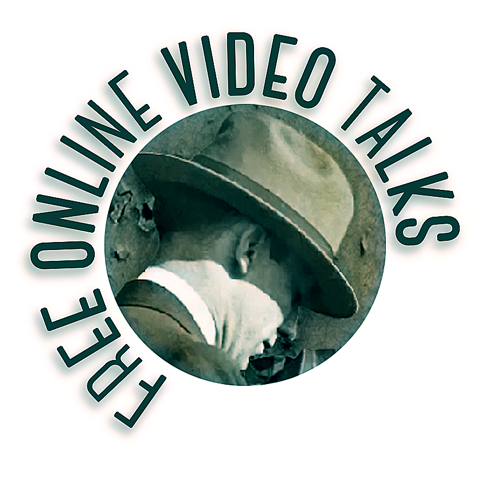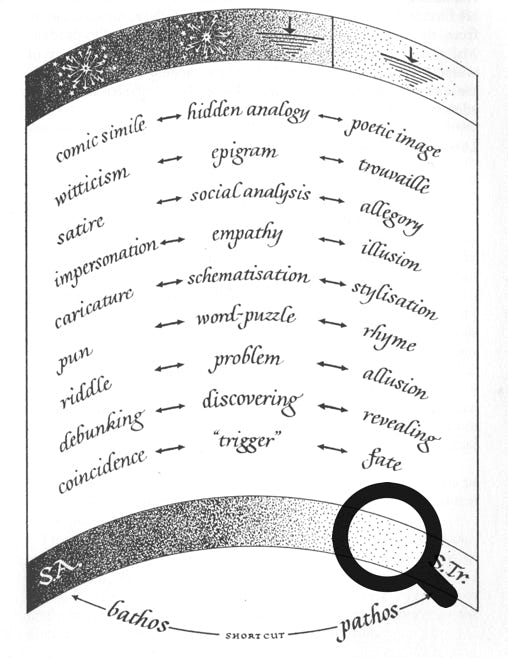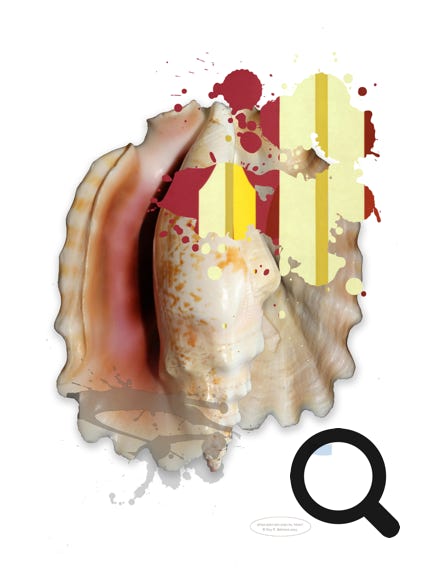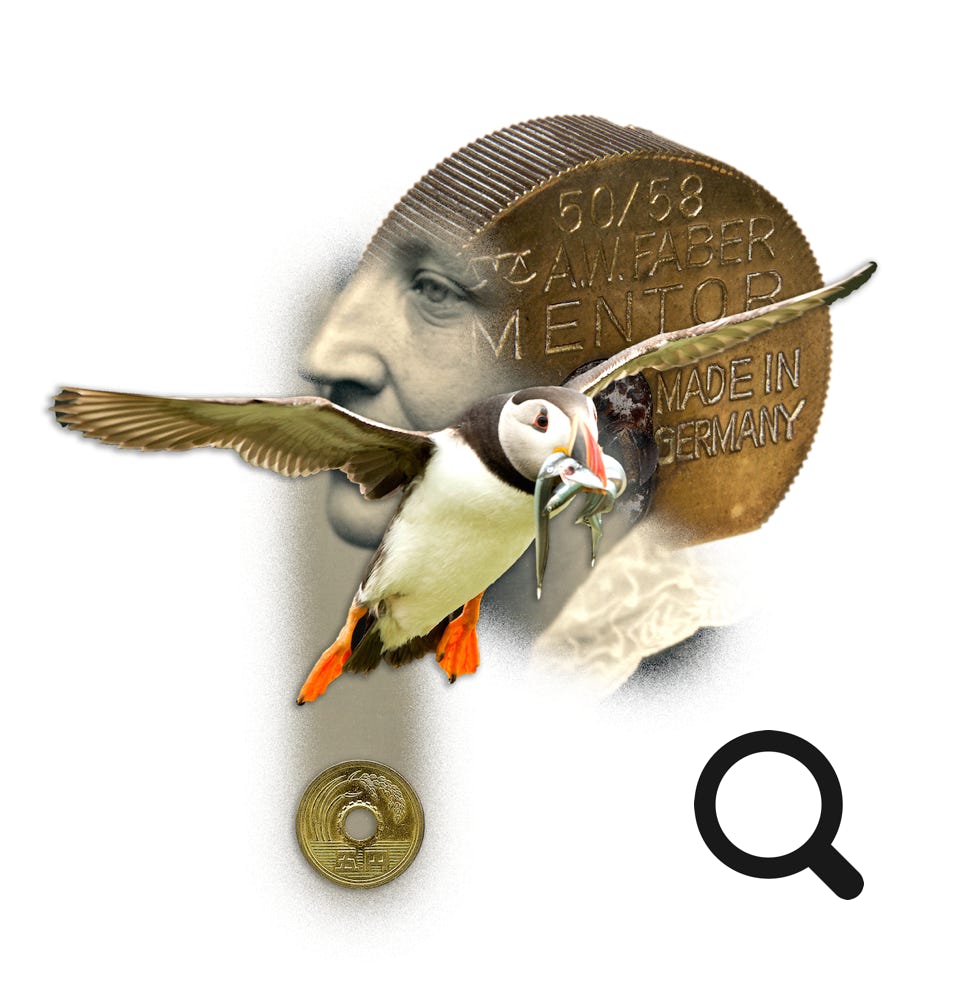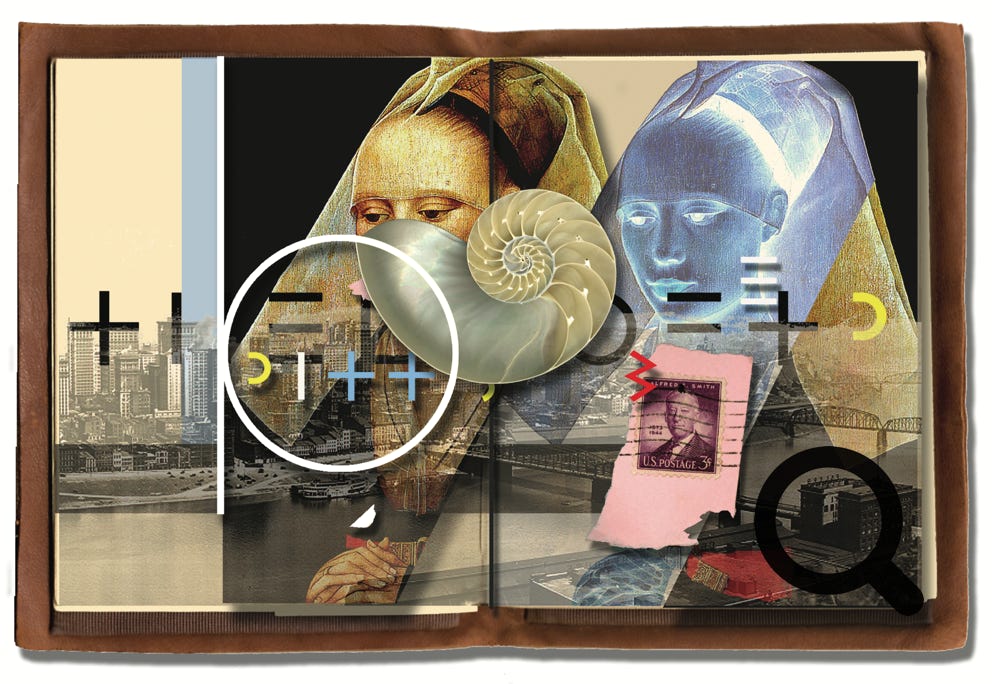Robert Frost [in an interview with John Ciardi] “Man likes to bring two things together into one… He lives by making associations, and he is doing well by himself and in himself when he thinks of something in connection with something else that no one ever put with it before. That’s what we call a metaphor.”
Aristotle (The Poetics): “The greatest thing by far is to be a master of metaphor… It is a sign of genius, because a good metaphor implies an intuitive perception of the similarity in dissimilar things.”
Above Koestler’s diagram of the trivalent aspects of bisociation in humor, art and science.
Guy Murchie (Song of the Sky): “Clouds are…the sheet music of the heavens, the architecture of moving air…some are ragged coattails of storms that have passed. Some are stagnant blankets of warm air resting on cold. Some are mare’s tails floating in the chill upper sky. Some are herringbones, sheets, cream puffs, ox-bends, veils, hammerheads, spangled mantillas, sponges, black shrouds.”
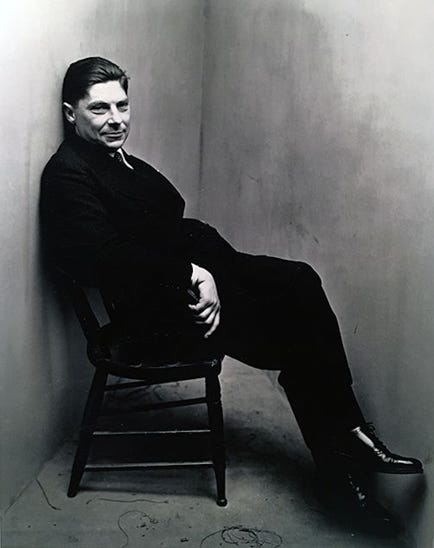
Above Photograph of Arthur Koestler by Irving Penn for Vogue (1948)
David Pye (The Nature of Design): “The poet invents new juxtapositions of words and phrases which convey new thoughts. The inventor makes new juxtapositions of things which give new results. Neither the poet’s words nor the inventor’s things have any remarkable properties of their own. They are everyday words and things. It is the juxtaposition of them which is new.”
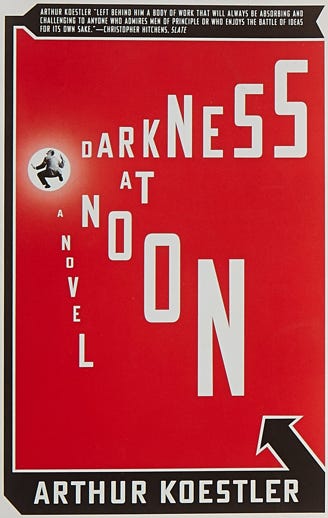
Henny Youngman: “Did y’hear they crossed a mink with a gorilla? They got a nice coat but the sleeves were too long.”
On an unforgettable evening in 1949 in Paris, a greatly intoxicated Arthur Koestler (who was small and reputedly scrappy) threw a glass at Jean-Paul Sartre and gave Albert Camus a black eye.
Right Roy R. Behrens, digital montage titled Nautilus Bridge (c2006).
The now common fastener known as Velcro was invented in 1941 by George de Mestral, a Swiss engineer. The idea occurred to him as a result of taking a walk in the Alps with his dog, and returning home covered with burrs from burdock plants. When he looked at the burrs under a microsope, he found that they consisted of tiny “hooks” that easily attached to “loops,” such as on clothing or animal fur. Voila! Velcro came about by his duplication of comparable hook-and-loop structures.
Right Roy R. Behrens, digital montage titled Tribute to Georgia O’Keeffe (2011).
An earlier, different version of this essay, titled “Encountering Koestler,” was published in PRINT magazine (New York). Vol 52 No 5, Sept-Oct 1998, pp. 38ff.
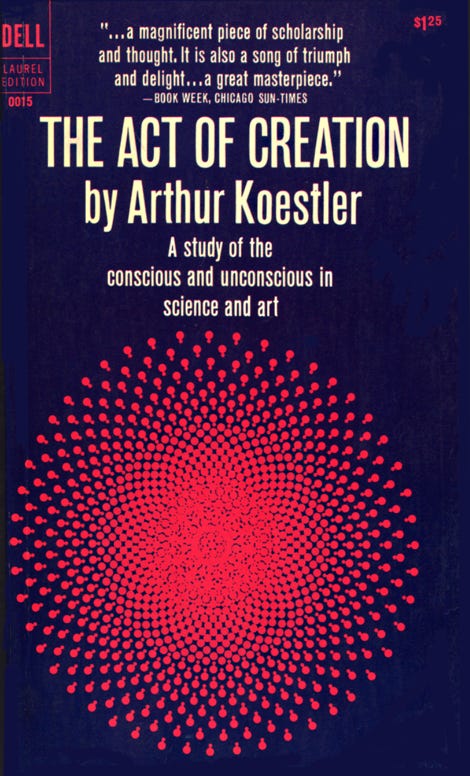
Footnotes [RB]
* I had no contact with J.B. Rhine or Timothy Leary, thankfully, but for several years in the early 1970s, I worked with James V. McConnell as a cover designer / contributor for the double-sided Worm Runner’s Digest and Journal of Biological Psychology. At the time, whenever he visited London, McConnell would drop in on Koestler, whose writings about creativity he had little interest in. When he died in 1990, I had no idea that he had been targeted by the Unabomber, and had suffered a major hearing loss.
** I’ve never had much interest in Skinner, but I did read his autobiography, and was surprised and delighted to find that his mother was one of those people who can walk out into a clover field, and spot the four-leaf clovers. I’ve known three or four others who could do the same.
*** Despite its being oft-quoted and recommended, The Act of Creation has often been out of print since the 1990s. Used copies are rare and increasingly costly, but the entire text is now online.
**** In the 1970s, Koestler made a film titled Koestler on Creativity, but it’s now very hard to find. In 1983, he also wrote the article on “Humor and Wit” in the fifteenth edition of the Encyclopedia Britannica. There is no shortage of writings about Koestler the person, some of which are scandalous. A balanced, more tempered depiction of him is in Julian Barnes’ “Playing Chess with Arthur Koestler” in Kai Erikson, ed., Encounters (New Haven: Yale University Press), 1989.
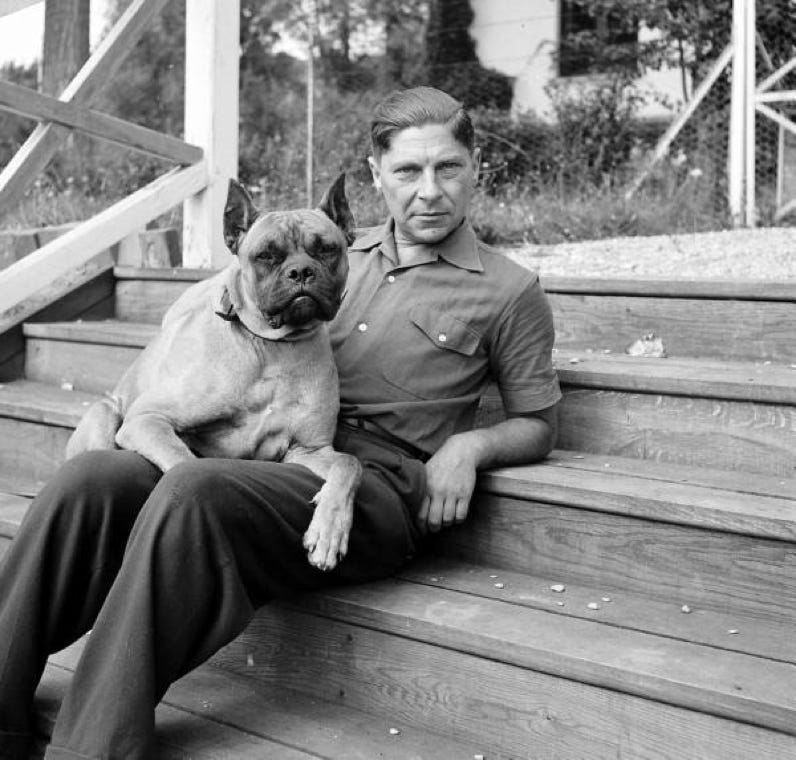
As an undergraduate art student in the 1960s, I was required to read for Humanities class Arthur Koestler’s Darkness at Noon, Albert Camus’ The Stranger, and Jean-Paul Sartre’s No Exit. Many years later, I discovered that, amusingly, all three of these literary titans had been extraordinarily heavy drinking companions in postwar Paris, and that on one unforgettable evening in 1949 a greatly intoxicated Koestler (who was small and reputedly scrappy) had thrown a glass at Sartre and had given Camus a black eye.
My favorite photograph of Koestler was made in the same year as that famous brawl by Dmitri Kessel for Life magazine. A double portrait of the Hungarian-born British writer and his magnificent boxer Sabby, it is memorable in part because of the clever, uncanny resemblance between dog and master—boxer meets boxer, they seem deliberately to be imitating one another.
In addition, it is, as theorists sometimes say, a “self-exemplifying” image because that portrait is a paradigmatic example of what Koestler identified as the key ingredient throughout all creative activity: “The discovery of hidden similarities” or (his neologism) bisociation, which he defined as perceiving a thing “in two self-consistent but incompatible frames of reference at the same time.”
Born in Budapest, Austria-Hungary, in 1905, Koestler moved with his family to Vienna at the end of World War I, where he attended the University of Vienna in science and psychology. Of Jewish ethnicity, he also became interested in Zionism. After living briefly in Palestine, he worked as a science editor and foreign correspondent for European newspapers. In 1931 in Berlin, he joined the Communist Party (it was, in his words, “the only apparent alternative to Nazi rule”) and traveled to the Soviet Union.
Imprisoned in 1937 for three months by the Fascists during the Spanish Civil War, he narrowly escaped a death sentence. Meanwhile, he had grown disenchanted with the Soviet Union, and in 1941, he became an outspoken opponent of Communism with the publication of Darkness at Noon, a chilling political novel about the show trials and purges in Stalinist Russia.
When he gave up Communism, Koestler also abandoned political writing. Returned to scientific subjects, he spent the second half of his life writing innovative and often controversial books about the nature of problem-solving, hierarchical structures, biological evolution, and parapsychology.
In 1964, he published The Act of Creation, an elaborate 750-page opus in which he presented a wide-ranging theory about creativity in art, scientific discovery, and humor. “The originality of genius, in art as in science,” wrote Koestler, “consists of a shift of attention to aspects of reality previously ignored, discovering hidden connections, seeing familiar objects or events in a new light.”
I recognized Koestler’s name when I first saw a copy of The Act of Creation in 1967. But I had no idea that he had shifted from political fiction to scientific polemic. While touring the US several years earlier, as I later learned, he had visited the University of Michigan at Ann Arbor to witness the flatworm learning experiments of psychologist James V. McConnell (who published The Worm Runner’s Digest, on which I would later work); had conferred with J.B. Rhine at Duke University about extrasensory perception; and had taken an LSD trip with Timothy Leary at Harvard.*
More than any other book, The Act of Creation (subtitled A Study of the Conscious and Unconscious in Science and Art) influenced my thinking and profoundly changed the way I work as an artist, graphic designer, writer and teacher. Simply, before reading it, I had entirely misunderstood the nature of creativity. I had thought of it literally, in the sense of the Old Testament, as a process by which one “creates” something new from nothing. Young, and defiantly determined to be original and “self-expressive,” I made an unwavering effort to avoid being influenced by other students, teachers and professionals.
All this is absurdly self-evident now, but at age 19, as I read Koestler’s book, I experienced a kind of epiphany in which I came to realize that human beings never literally create; they never produce any thing from nothing. Instead, all innovations—artworks, design solutions, or scientific discoveries—come about from the reshuffling and recombination of already existing components, by a process Albert Einstein called “combinatory play.”
To follow, if I really hoped to become an effective designer, an inspiring teacher, or an ingenious problem-solver, I should actively seek influences, not avoid them. I should be open to and eager to learn about the widest variety of subjects, and in particular I should be interested in things that fall outside the realm of graphic design. Indeed, the greater the number, disparity, and presumed initial irrelevance of such influences, the more likely that they would eventually make unexpected combinations.
Gradually, in part because of Koestler’s book, I stopped thinking of human endeavor as rigidly sequestered in categories like art, language, psychology, physics, and so on. I began to read and observe more broadly, and to regard experience as a cross-section in which seemingly incompatible fields could be linked by universal form principles, such as rhyme, analogy, metaphor, montage, and metamorphosis. I also became more appreciative of the value and significance of humor, the usefulness of accidents and errors, and the contribution of unconscious ruminating or incubation.
In 1971, as a graduate student at the Rhode Island School of Design, I finished a book manuscript in which I talked about art and design in relation to Koestler’s ideas. I mailed the manuscript to his London home address, half expecting that he would return it unopened. To my surprise, not only did he read it, he replied with a wonderfully generous note, accompanied by a jacket blurb. Soon after, it was accepted for publication (but never published, fortunately, because I withdrew it, then published it later in a much improved, expanded form, called Design in the Visual Arts). Since then, a flood of comparable books have come out about the use of bisociative wit in design, among the finest of which are Beryl McAlhone and David Stuart’s A Smile in the Mind (Phaidon, 1996), Alan Fletcher’s The Art of Looking Sideways (Phaidon, 2001), and Michael Johnson’s Problem Solved (Phaidon, 2002).
It was exhilarating to be encouraged by an author whose books I had once been required to read. For more than ten years, I continued to write to Koestler on occasion and to send him copies of my published essays. In part from having read his books, I became interested in camouflage, mimicry, and the coloration of animals. I became an amateur lepidopterist, and along with one of my letters I sent him a mounted butterfly, inscribed with its Latin scientific name. At the time, he was an unrelenting opponent of behavioral psychology, the chief proponent of which was Harvard psychologist B.F. Skinner.** In appreciation of the butterfly I sent him, Koestler replied with a humorous card that featured a reproduction of a tapestry of St. George slaying the dragon. Below, beside a hand-drawn arrow pointing to the dragon, he had written Drakon Skinneris.
My final letter to Koestler was in the summer of 1982, when I wrote to tell him that Design in the Visual Arts (Prentice-Hall, 1984), my reincarnated earlier work, would be dedicated to him. He was seventy-seven. I hadn’t known that he was ill, that he had been diagnosed with both Parkinson’s disease and leukemia. As his condition worsened, it had become all but impossible for him to work. His wife Cynthia, on the other hand, who was 22 years younger, was apparently in good health. As members of a euthanasia group called Exit, they were advocates of “the right to die with dignity.” Sadly, on March 1, 1983, in the living room of their London home, they committed suicide together by taking an overdose of barbiturates.
On occasion, I still return to passages in The Act of Creation, many of which are exquisitely worded and seem to be stirring descriptions of what I myself experience when I design, write, teach or whatever. As fresh as Koestler’s writing remains, it is hard to believe that almost a half century has passed since that book was initially published. Indeed, it came out in the same year as the Ford Mustang, zip codes, The Warren Commission Report, my high school graduation, and Elizabeth Taylor’s first marriage to Richard Burton.
Following his death, aspects of Koestler’s earlier life became ignominious, to the extent that his work may forever be tarnished. But even in advance of that, his writings had been controversial. In a biography of Koestler, Ian Hamilton said of The Act of Creation that it is “by any standard an astonishing work of erudition, brilliance, originality, and daring to the point of foolhardiness.”*** Even with an admission of foolhardiness, that endorsement of the book would probably still objection among some critics, mostly scientists and academics, who dismiss it, along with his subsequent work, as mere “clever journalism.”
The Cold War has long ago ended [only to have resumed in recent years], and deconstruction has replaced existentialism on college campuses. Students are rarely required to read Koestler’s Darkness at Noon, Sartre, or Camus. Much of the research of extrasensory perception has been discounted as unreliable. James V. McConnell, whose conclusions about planaria were challenged by other scientists, was lucky to survive when he received a package from the Unabomber in 1985. When Timothy Leary died of prostate cancer more than a dozen years ago, it was rumored that he had arranged for his head to be preserved through cryogenic suspension, for resuscitation in the future.
Shoulder-length hair. Miniskirts. Green Acres. Marshall McLuhan. In retrospect, nothing from the mid-60s seems as compelling or sophisticated as it once did. And Koestler’s The Act of Creation is no exception. Nevertheless, I remain very grateful for what it taught me—and I am not alone. Scores of others were also influenced by it, and today there is probably no other work that is quoted or listed more often in books on creativity, humor, and problem-solving.****
Above Roy R. Behrens, digital montage titled Dorado (2015).
Photograph of Arthur Koestler by Dimitri Kessel for Life (1949)

